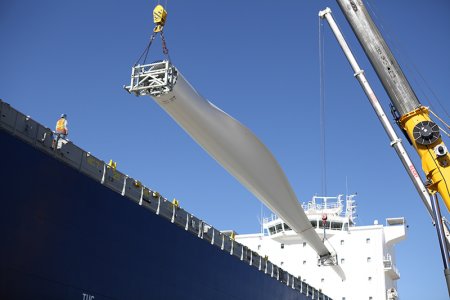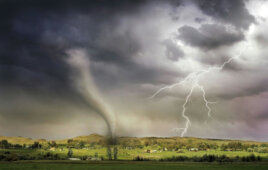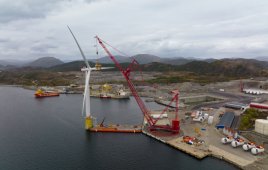By Evgenia Golysheva, VP of strategy and operations, ONYX Insight
In their quest to lead the fight against climate change, clean energy industry stakeholders have had to overcome no end of challenges. And in doing so, huge progress has been made; the levelized cost of solar and wind energy has tumbled in the last decade, technology has evolved rapidly and now – at such a critical time for our planet – renewable energy sits right at the heart of the energy transition. It is undoubtedly seen as the weapon of choice for governments seeking to rapidly decarbonize their energy systems while enhancing their security.
But one very significant challenge to the clean energy sector is increasingly coming into focus: greenflation.
What is greenflation?
Defined in simple terms, greenflation is the sharp rise in the price of materials like metals, minerals like lithium, and other resources such as labor, energy and fuel that are used in the creation of renewable energy technologies and projects.
There is presently no single trend behind price increases experienced by wind sector stakeholders. The COVID-19 pandemic has placed global supply chains under strain, leading to rising raw material costs and global labor shortages. The war in Ukraine and subsequent sanctions on Russia has compounded this – particularly when it comes to the costs of energy needed to produce and ship materials.
In turn, this has meant higher manufacturing and logistical costs throughout the value chain, including for components, capital equipment and technical resources.
According to various outlooks, forecasts and indices, commodity prices are surging – in spite of renewable energy development. Energy commodity prices published by The World Bank in March 2022 have surged 63.4% over the last 12 months, while non-energy commodities, including metals and minerals, increased 22.7%. Increases in both energy and non-energy commodity prices are causing renewable energy project development costs to rise.
The Refinitiv CoreCommodity CRB Index, a composite measure of commodity prices, was up 46% on the year at the end of January, the largest one-year increase since 1995, when comparable data became available.
There are also demand-led causes. A push for new wind projects as countries seek to reach their net-zero goals, alongside a scramble to install as government subsidies begin to disappear, has stoked fierce competition for limited assets and services. The supply chain, including maritime and maintenance service providers, has been stretched to capacity, even as their own costs increase.
International Monetary Fund research published in November 2021 stated that “the world’s historic pivot toward curbing carbon emissions is likely to spur unprecedented demand for some of the most crucial metals used to generate and store renewable energy in a net-zero emissions by 2050 scenario.”
It found that costs of these metals will surge, with the potential for lithium to rise from its 2020 level of around $6,000 per metric ton to about $15,000 late this decade – and stay elevated through most of the 2030s. Cobalt and nickel prices, the IMF says, could also see similar surges in coming years.
And a report published by Wood Mackenzie in August last year – prior to the Q4 gas price surge – highlighted that commodity price increases, coupled with a four-fold rise in logistics costs, would see turbine prices go up by 10%.
Greenflation is hitting OEMs hard
OEMs have been particularly impacted, with many reporting profit warnings last year and posting huge losses through the first half of 2022. This situation is unsustainable – OEMs are the lifeblood of the wind industry and without them nothing can be done.
It isn’t all bad news. These are temporary growing pains, arising partly from wider inflationary pressures, but also due to growing demand. Renewable energy is scaling rapidly, with lower cost financing available to green businesses from environmentally minded financiers. That is cause for celebration.
Wind energy will overcome this challenge, as it has many others. However, while greenflation has a more immediate and significant effect on developers and OEMs, owners and operators will inherit projects with tighter margins within the decade.
A future problem for operators
That is why building a robust understanding of efficient operations is key to mitigating the effects of today’s greenflation, while continuing to drive down costs and improve efficiencies in years to come.
With O&M accounting for almost 60% of total operational expenditure, wind project owners and operators can mitigate against the impacts of greenflation by optimizing their O&M strategies.
“Wind Power’s Greenflation Frustration,” a recent report by ONYX Insight, takes operators through the four steps they can take to bolster predictive maintenance programs, in turn reducing costs and safeguarding profits as greenflation begins to bite. A best practice predictive maintenance program could reduce OPEX costs by 17% on average.
Despite greenflation, operators can boost their portfolio’s long-term profitability by thinking holistically – reducing labor and logistical costs, and component replacements.
Four steps that could ease operators’ future greenflation pain
There are four steps – underpinned by a series of self-analytical questions – that operators can take to safeguard against the long-term impacts of greenflation.
The first way to do this is by looking at base level capability. A robust and reliable predictive maintenance strategy involves understanding the risks and opportunities for improvement across a wind portfolio. Most asset owners already have various software products deployed across their fleet. They can start with gap analysis to identify areas for improvement.
The second is to build a greenflation-proof business case. Greenflation is an evolving trend, but the risk profile of a wind portfolio also changes with time. The historical performance of a wind farm does not reliably indicate the future performance since failure rates are not static.
By utilizing accurate, turbine-specific technology to predict failure rates, asset owners can forecast and implement solutions before reliability issues start to surface.
Thirdly, operators should carefully select predictive maintenance technology. Specific technologies that enable predictive maintenance include software tools such as analysis dashboards and data management platforms, sometimes enhanced by additional hardware such as vibration, oil quality/contamination and audio sensors.
Operators need to assess track record, accuracy and reliability, what components are covered and lead time on fault detection and the technology’s ability to manage diverse data streams (SCADA, sensors, non-structured data).
And finally, they need to implement and integrate a program. The relatively slow adoption of digital technologies in wind is in part due to owners and service providers relying on case studies instead of backing operational decisions with statistical analysis. Performance statistics are key to a systematic approach, enabling operators to create KPIs at the implementation stage that track the ability of digital technologies to achieve and maintain desired business outcomes, such as production-based availability, climbs per wind turbine per year, labor hours per component, and so on.
Enabling a holistic data-led O&M strategy allows operators to identify opportunities to pool resources, such as consolidating transport costs and technical resources or maintaining a joint inventory. Data integration – and sharing – is key to achieving this.
Fail to prepare, prepare to fail
So the old adage goes. Greenflation is not a short-term consideration. It represents a rebalancing of costs across the wind industry in line with wider macroeconomic trends. It sits alongside critical challenges such as the looming skills gap and increased exposure to merchant markets.
Wind farm owners globally are demonstrating that digital technologies are essential in improving asset profitability, reducing uncertainty in energy production and optimizing operational efficiency. Now they need to ensure, that as they inherit the challenges currently being posed to the wind industry by greenflation, that they have the capabilities to deal with it by being forensic in their approach to operations cost management.
 Evgenia has been supporting wind farm owners for over 10 years, focusing on using data to increase the efficiency of wind farm operation, improve asset reliability, and de-risk major maintenance activities. As VP of Strategy at ONYX Insight, Evgenia looks at changes in the renewables sector driven by global energy transformation, analyses challenges faced by industry players, and supports ONYX in defining future-proof technology solutions for renewables owner-operators worldwide.
Evgenia has been supporting wind farm owners for over 10 years, focusing on using data to increase the efficiency of wind farm operation, improve asset reliability, and de-risk major maintenance activities. As VP of Strategy at ONYX Insight, Evgenia looks at changes in the renewables sector driven by global energy transformation, analyses challenges faced by industry players, and supports ONYX in defining future-proof technology solutions for renewables owner-operators worldwide.
Filed Under: Featured








Evgenia makes some excellent points about the importance of predictive maintenance technology and its potential to help wind farm owners improve profitability and reduce uncertainty.
I agree that data integration and sharing are crucial to achieving this.
I believe that operators must be careful in selecting technology to ensure it is reliable and accurate.
It is also essential to have a systematic approach in place to track the performance of digital technologies and create KPIs that measure their effectiveness.
I think this is especially important given the challenges posed by greenflation and the need to manage costs carefully.
Thanks for writing this article!